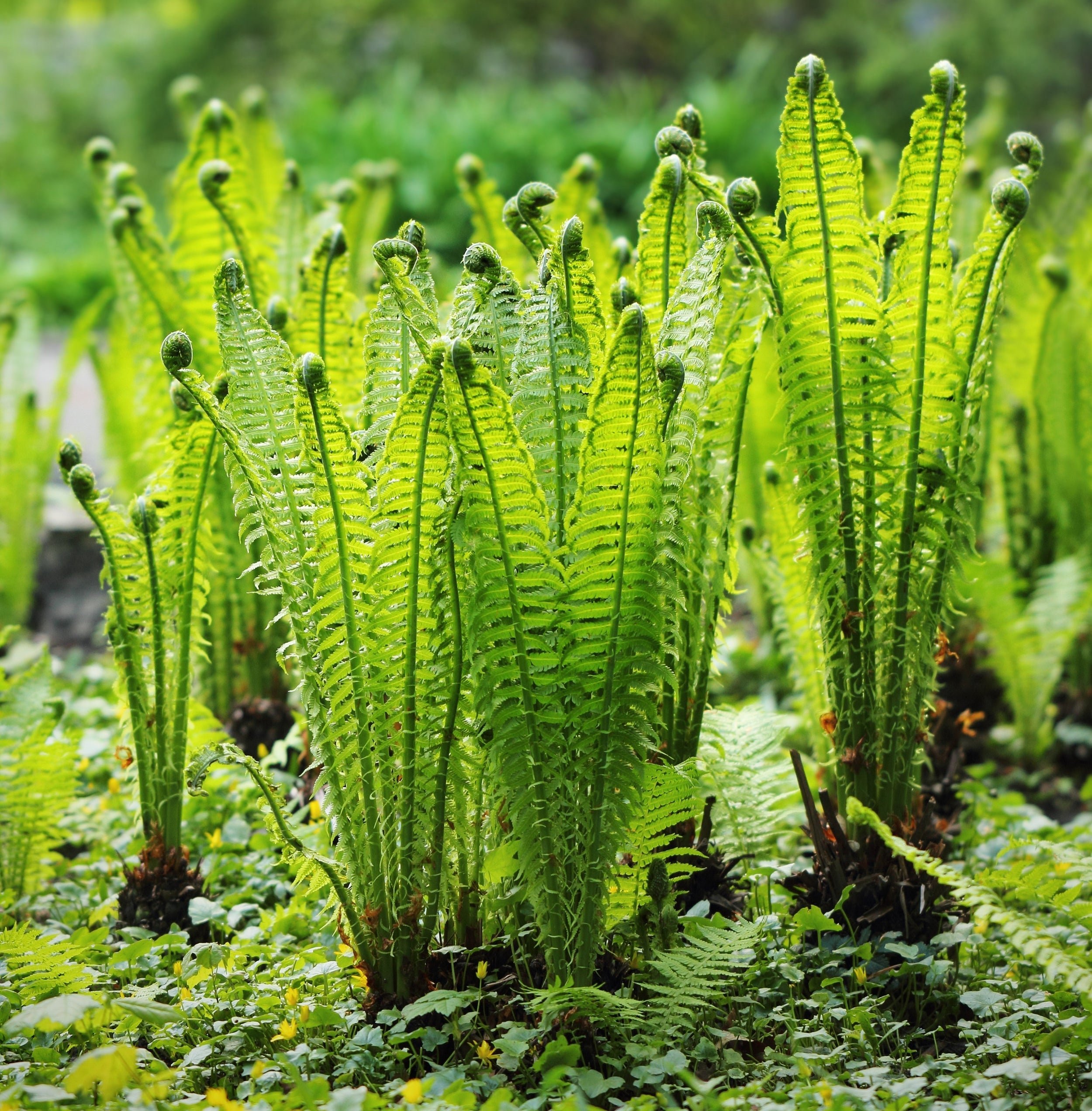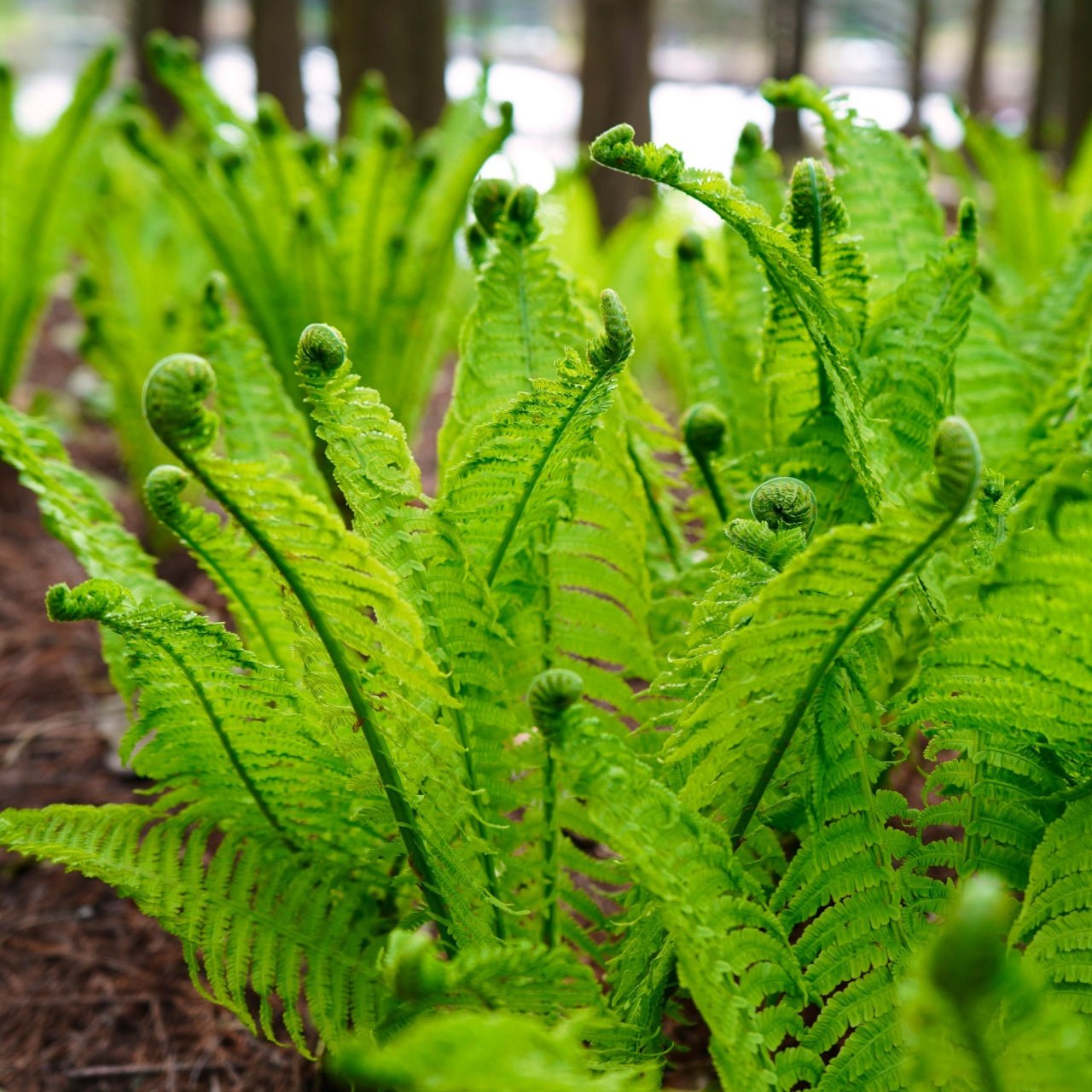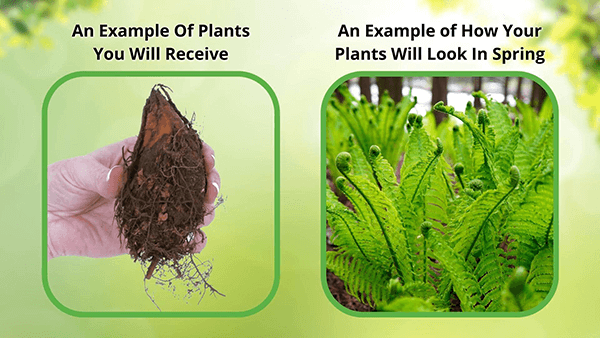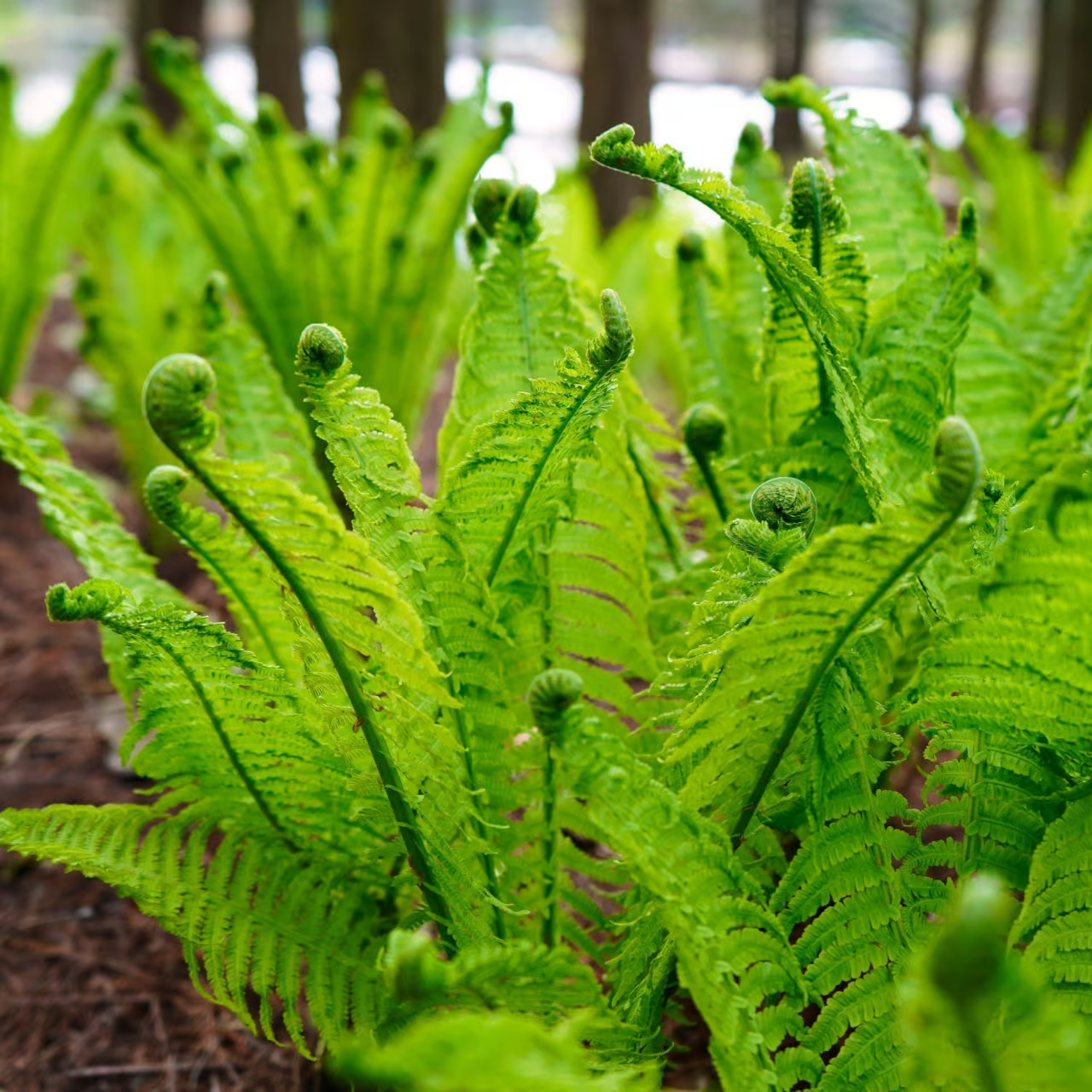



Fiddlehead Fern
Thrives in shaded, moist areas
Unique, attractive, spiral-shaped fronds
Enhances natural woodland aesthetics
Thrives in
ZONE 3ZONE 4ZONE 5ZONE 6ZONE 7ZONE 8ZONE 9This plant ships:
Ships 7-10 Days1 Year Guarantee on all plants
Fiddlehead Fern - Matteuccia struthiopteris
The Fiddlehead Fern (Matteuccia struthiopteris), also known as Ostrich Fern, is a woodland beauty with fronds resembling the plumage of an ostrich. This fern is native to North America and is naturally found in shaded moist habitats such as stream and river banks.
This fern is large, growing up to 6 ft tall and around 4 ft across, and easily naturalizes forming colonies of lush, feathery fronds. The sterile fronds emerge upward from the rhizome and gentle arch outward from the base, while the fertile brown fronds develop erect from the center of the plant. This fern is deciduous, with fronds beginning to dieback after the first frost in autumn. However, the fertile fronds remain throughout the winter, adding a lovely brown tone to the landscape.
Plant Details - Fiddlehead Fern
Family: Onocleaceae
Hardiness Zones: 3–7
Light Requirement: Partial shade to full shade
Water Needs: Moderate to high
Height: 3 - 6 ft
Spread: 2 - 4 ft
Growth Rate: Fast
Bloom Time: NA
Flower Color: NA
Wildlife Value: Provides cover and habitat for wildlife in woodland ecosystems
Not only is the Fiddlehead Fern visually stunning, it is edible and well-known for its tasty young fiddleheads. They are similar to the flavor of green beans when cooked and are full of vitamins, antioxidants and fatty acids. The rhizome is also edible and can be roasted after peeling for a delicious treat.
The Fiddlehead Fern was a recent recipient of the Award of Merit from the Royal Horticultural Society for its ornamental value and is a gardener’s favorite across North America. Easy to grown and maintain, this fern makes a great underplanting option and is a wonderful addition to a shaded garden or woodland landscape.
Landscape Uses and Maintenance - Fiddlehead Fern
It is an easy to grow fern and virtually pest and disease-free. It prefers shaded environments however will tolerate part shade locations as well. Plant this vivacious fern in a protected area as strong wind can damage the fronds.
While this plant is easy to maintain, it does not tolerate summer heat. Make sure that the soil stays moist. Applying a layer of mulch in the summer time will help retain moisture and also keep the roots cool. This fern can be propagated by divisions in spring or by sowing the developed spores.
Noteworthy Characteristics
Easy to maintain, feathery fronds, edible fiddleheads Plant this multipurpose fern in your garden to enjoy its stunningly lush green fronds and deliciously tasty fiddleheads year after year. Shop for the Fiddlehead Fern online at TN Nursery. For 68 years, we have served the landscaping industry and homeowners with specimen plants.
This Is How Your Plants Will Look upon Delivery

Height at Maturity
Over 2 Feet
Care
Fiddlehead ferns prefer consistently moist soil, so water regularly to keep the soil damp. They thrive in well-draining, rich soil and benefit from frequent feeding with a fertilizer in the growing season. Prune back any dead or damaged fronds as needed.
Plant Reproduction
Fiddlehead Fern spreads via rhizomes and spores
Choose early spring or fall when the soil is moist and cool to plant healthy bare-root ferns. You can also use dormant plants to grow year-round. When you arrive, please soak the roots in water for several hours to rehydrate them. Ferns thrive in moist and shaded areas. Dig a hole wide and deep enough to spread out the roots comfortably. Position the fern so the crown (where the roots meet the fronds) is just at or slightly below ground level. Gently backfill with soil firmly around the roots, and thoroughly water to settle the soil and eliminate air pockets. Apply a 2-3 inch layer of mulch for weed control and to retain moisture, ensuring the mulch does not touch the crown. Water during dry periods is used to keep soil moist but not soggy. Avoid fertilizing in the first year, as ferns prefer nutrient-rich soil over direct fertilization.
Shipping date depends on the date displayed and chosen when you order from the product's page.
We only accept returns on plants verified dead. If you think your plants have died, we offer a 1 year warranty, please use this File a Claim Link to verify dead plants and start with return warranty process.






Unique Fronds:
Renowned for their coiled fronds that unfurl into lush, intricate patterns, adding a captivating beauty to any garden.
Adds Texture:
The intricate fronds add texture and depth, complementing other plants and flowers beautifully.
Thrives in Shade:
Perfect for shady spots, bringing vibrant greenery to areas where many other plants struggle.
Supports Biodiversity:
Provides habitat for small wildlife and insects, enhancing local biodiversity and a healthier ecosystem.
Caring Tips
How do I care for my Fiddlehead Fern?
Each box contains detailed care instructions and information about your product. But here's the basics.
Care Tips
Fiddlehead ferns prefer consistently moist soil, so water regularly to keep the soil damp. They thrive in well-draining, rich soil and benefit from frequent feeding with a fertilizer in the growing season. Prune back any dead or damaged fronds as needed.
Light Requirements
Fiddlehead ferns thrive in low to moderate light conditions. They prefer indirect or filtered light, which mimics their natural woodland habitat. Dodge direct daylight, as it can scorch their delicate fronds. Ideal locations include shaded areas or dappled sunlight.
Hardy Planting Zones
3 • 4 • 5 • 6 • 7 • 8 • 9
Header
Use this content to share information about your store and products.
Frequently Asked Questions
How often should I water my plants?
How do I know if my plant is getting too much or too little sunlight?
What should I do to prepare my plants for winter?
What are the signs that my plant needs fertilizing?
How can I prevent pests from damaging my plants?
How do I choose the right plant for my climate zone?






